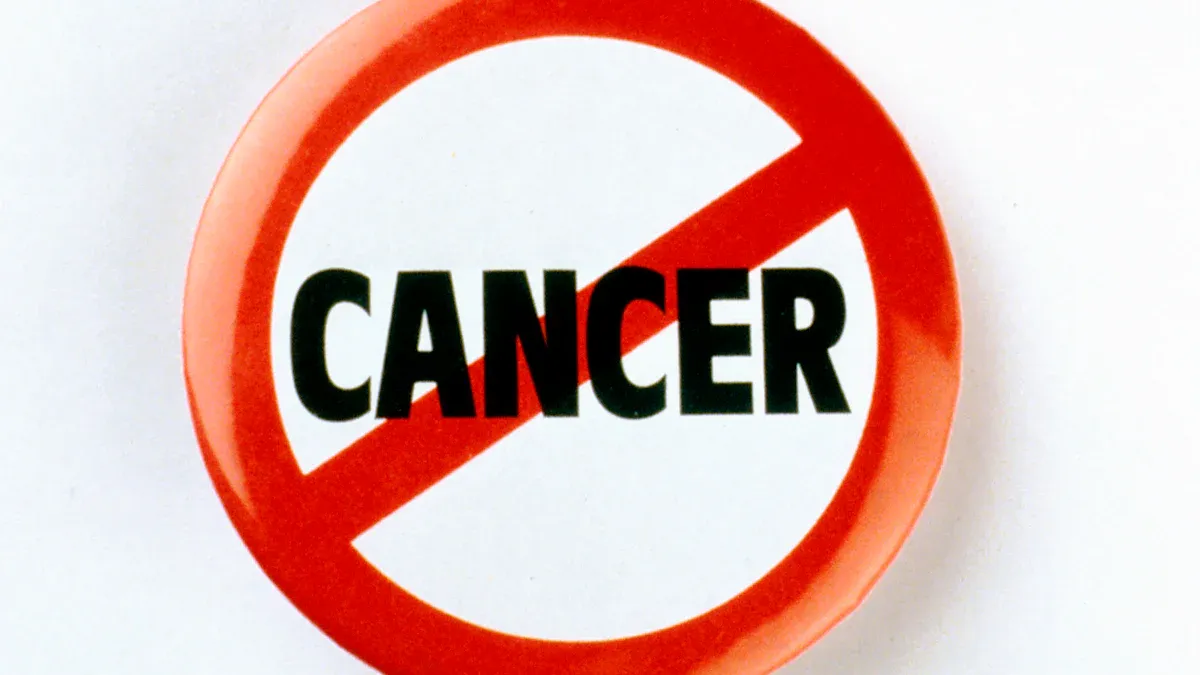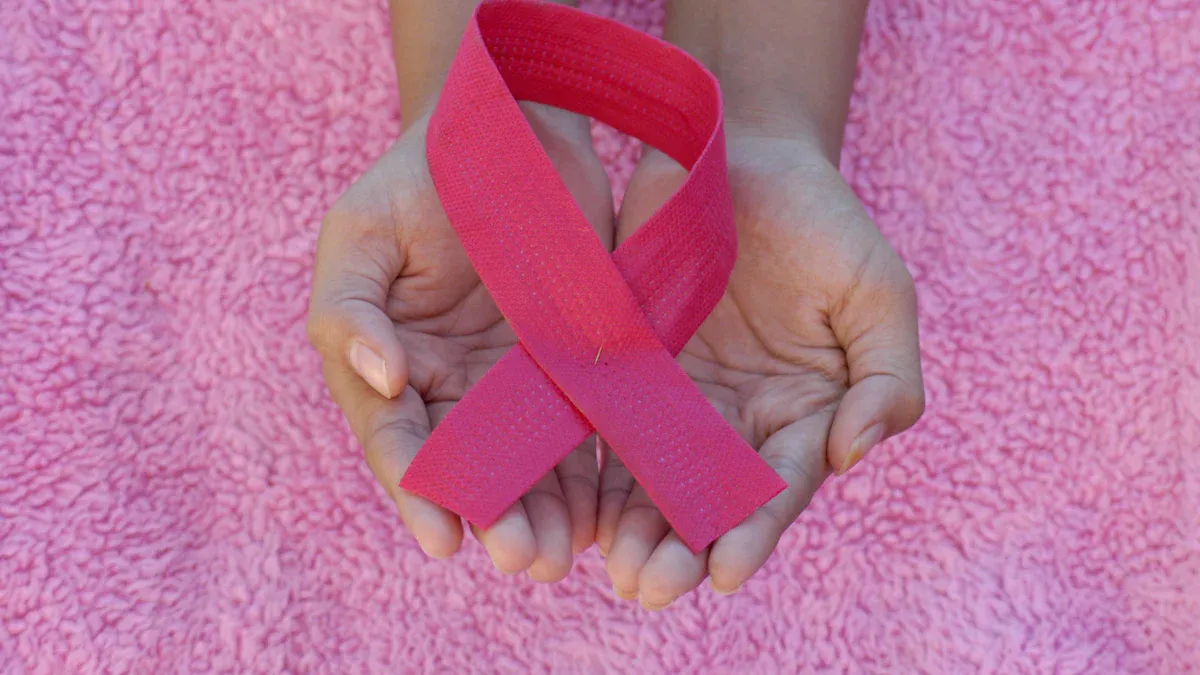Can You Prevent Cancer by Avoiding Common Risk Factors?

Not all cancers are preventable, but you can lower your risk by making healthier choices. Research shows that about 40% of cancer cases are preventable. For example:
Tobacco-related cancers decrease by 8% when smoking is avoided.
Alcohol-related cancers drop by 4% with reduced consumption.
Obesity-related cancers show a 6% lower incidence with weight management.
Adopting a healthy lifestyle, like improving your diet or staying active, empowers you to take control of your health. Can you prevent cancer just by avoiding risk factors? While not guaranteed, these changes significantly reduce your chances.
Key Takeaways
Staying away from tobacco can lower your cancer risk a lot. Stopping smoking reduces the chance of lung and other cancers.
Keeping a healthy weight by eating well and exercising is key. Managing weight helps lower the risk of many cancers.
Drinking less alcohol is very important. Cutting back can reduce the risk of cancers like breast and liver cancer.
Going to the doctor for checkups and tests finds cancer early. Finding cancer early makes treatment work better and saves lives.
Small changes, like eating more fruits and veggies, help a lot. These changes can lower cancer risk over time.
Can You Prevent Cancer Just by Avoiding Risk Factors?
The Role of Lifestyle Choices
Your daily habits play a significant role in determining your cancer risk. Positive lifestyle changes, such as quitting smoking or maintaining a healthy weight, can lower your chances of developing lifestyle-related cancers. The Norwegian Women and Cancer Study (NOWAC) highlights this connection. It found that improving lifestyle choices reduces cancer risk, while worsening habits increase it.
Key findings from the study:
A negative dose-response relationship exists between positive lifestyle changes and cancer incidence.
Maintaining stable habits is better than adopting unhealthy ones.
Public health interventions have also shown measurable results. For example, lifestyle-related cancers decreased by 7% after widespread efforts to promote healthier living.
The Impact of Environmental Exposures
Environmental factors contribute significantly to cancer risk. Pollutants, occupational agents, and naturally occurring substances like radon can increase your chances of developing cancer. Radon, the second leading cause of lung cancer in the U.S., is a prime example. Globally, environmental exposures account for nearly 20% of all cancers, according to WHO.
Outdoor air pollution has been classified as a carcinogen by the International Agency for Research on Cancer (IARC). Research also links arsenic in drinking water to cancers such as lung, prostate, and pancreatic cancer. Ana Navas-Acien, a professor of environmental health sciences, emphasizes the importance of addressing carcinogens in air, water, and food to reduce cancer risk.
Understanding Genetic Predispositions
Your genetic makeup can influence your likelihood of developing cancer. Certain mutations, such as BRCA1 and BRCA2, are strongly linked to hereditary breast and ovarian cancers. Family history also plays a critical role. Studies show that women with two or more relatives diagnosed with breast cancer face a 2.5-fold increased risk.
Evidence Type | Description |
|---|---|
Genetic Mutations | BRCA1 and BRCA2 genes linked to hereditary breast cancer |
Family History | 5-10% of breast cancer patients have a family history |
Risk Statistics | 50-85% of women with BRCA mutations develop cancer |
Research underscores the importance of genetic predisposition in assessing cancer risk. If you have a family history of cancer, proactive measures like genetic testing and regular screenings can help you manage your risk effectively.
Avoiding Lifestyle-Related Risk Factors

Smoking and Tobacco Use
Tobacco use remains the leading preventable cause of cancer worldwide. Smoking increases your risk of lung, throat, mouth, and bladder cancers. Even reducing the number of cigarettes you smoke daily can lower your risk. For example, cutting back from 20 to 15 cigarettes per day reduces lung cancer risk by 20%. However, quitting entirely offers the greatest health benefits.
Smoking Behavior | Lung Cancer Risk Reduction | Confidence Interval |
|---|---|---|
Reduce by 5 cigarettes/day | 0.71 to 0.90 | |
Smoke at 50% of visits | 28% lower risk | 0.57 to 0.90 |
Smoke at 10% of visits | 45% lower risk | 0.36 to 0.83 |
The Norwegian Women and Cancer Study (NOWAC) also highlights that improving lifestyle factors, such as quitting smoking, correlates with lower cancer rates. By avoiding tobacco, you take a significant step toward reducing your cancer risk.
Alcohol Consumption
Drinking alcohol increases your risk of several cancers, including mouth, throat, liver, and breast cancer. The more you drink, the higher your risk. For instance, consuming two drinks daily raises your lifetime cancer risk to 22 out of 100 people, compared to 17 out of 100 for those who drink less than one drink per week.
Alcohol Consumption Level | Cancer Risk (Lifetime) |
|---|---|
Less than 1 drink/week | 17 out of 100 |
2 drinks/day | 22 out of 100 |
Limiting alcohol intake can significantly lower your risk. Choosing non-alcoholic beverages or reducing your weekly consumption are practical ways to protect your health.
Diet and Nutrition
A balanced diet plays a crucial role in cancer prevention. Eating more whole grains, fruits, and vegetables while limiting processed foods and red meat can lower your risk. Studies show that following dietary guidelines can prevent up to 35% of breast cancers and 45% of colorectal cancers in developed countries.
The World Cancer Research Fund (WCRF) recommends a diet rich in plant-based foods. This approach not only supports overall health but also reduces cancer risk by 10-20%. Small changes, like adding more vegetables to your meals or choosing whole grains over refined options, can make a big difference.
By focusing on these lifestyle factors, you can take control of your health. Can you prevent cancer just by avoiding risk factors? While not guaranteed, these changes significantly reduce your chances.
Maintaining a Healthy Weight
Maintaining a healthy weight plays a crucial role in reducing your cancer risk. Excess body fat can lead to hormonal changes that increase the likelihood of developing certain cancers. For example, weight loss reduces levels of insulin, estrogens, and androgens, which are hormones linked to cancer risk.
Research highlights the connection between weight and cancer. Each 11-pound weight gain during adulthood raises the risk of endometrial cancer by 16%. Similarly, every 5-point increase in BMI (Body Mass Index) correlates with a 50% higher risk of endometrial cancer and a 12% higher risk of postmenopausal breast cancer. Waist circumference also matters. A 4-inch increase in waist size raises the risk of esophageal adenocarcinoma by 34%.
Evidence Type | Findings |
|---|---|
WCRF/AICR Score Increase | A one-point increase in the score reduces overall cancer risk by 12%. |
Hormonal Changes | Weight loss lowers insulin, estrogens, and androgens linked to cancer. |
BMI and Cancer Risk | A 5-point BMI increase raises endometrial cancer risk by 50%. |
Waist Circumference | A 4-inch increase raises esophageal adenocarcinoma risk by 34%. |
You can lower your cancer risk by maintaining a healthy weight through balanced eating and regular exercise. Small changes, like reducing portion sizes or choosing nutrient-dense foods, can make a big difference.
Physical Activity and Sedentary Lifestyles
Staying active is another powerful way to reduce your cancer risk. Physical activity helps regulate hormones, improve immune function, and reduce inflammation, all of which contribute to cancer prevention. Studies show that higher levels of physical activity lower cancer risk, while sedentary lifestyles increase it.
Physical Activity Level | Cancer Risk Reduction |
|---|---|
Higher levels | Lower risk |
Sedentary lifestyles | Increased risk |
You don’t need to become an athlete to see benefits. Simple activities like walking, gardening, or taking the stairs can help. Aim for at least 150 minutes of moderate exercise per week. Reducing sedentary behaviors, such as sitting for long periods, also plays a key role. By staying active, you take an important step toward a healthier future.
Reducing Environmental and Behavioral Risks

Sun Exposure and Skin Cancer
Protecting your skin from the sun is one of the simplest ways to reduce your cancer risk. Overexposure to ultraviolet (UV) rays increases the likelihood of developing skin cancers, including melanoma. The lifetime risk of dying from melanoma is 0.36% for white men and 0.21% for white women. Between 1973 and 1995, melanoma cases more than doubled, rising from 5.7 to 13.3 per 100,000 people.
Daily sunscreen use can significantly lower your risk. A study in Australia found that using sunscreen daily reduced squamous cell cancer incidence by 39%. Behavioral counseling for children, adolescents, and young adults aged 6 months to 24 years has also proven effective in promoting sun-safe habits. Simple steps like wearing protective clothing, seeking shade, and applying sunscreen can make a big difference in preventing skin cancer.
Avoiding Harmful Chemicals
Exposure to harmful chemicals in your environment can increase your cancer risk. Substances like radon and asbestos are known carcinogens. Radon, for example, is the second leading cause of lung cancer. The World Health Organization estimates that environmental factors, including pollutants, contribute to 20% of all cancers globally.
Industries that reduce exposure to toxic chemicals see a significant drop in cancer rates among workers. The Environmental Protection Agency (EPA) plays a key role in regulating harmful substances to protect public health. You can also take steps to minimize exposure by using non-toxic household products and testing your home for radon.
Preventing Sexually Transmitted Infections
Certain sexually transmitted infections (STIs), such as human papillomavirus (HPV), are linked to cancer. HPV causes nearly 34,800 cancer cases annually in the U.S., including cervical and oral cancers. Vaccination against HPV can prevent up to 90% of these cancers.
Practicing safe sex and getting vaccinated are effective ways to lower your risk. A study involving 3.5 million individuals showed that HPV vaccination significantly reduces the likelihood of developing cancers associated with the virus. Preventing STIs not only protects you from infections but also reduces your risk of cancer.
By addressing these environmental and behavioral risks, you can take meaningful steps toward a healthier future. Can you prevent cancer just by avoiding risk factors? While not all cancers are preventable, reducing these risks can significantly lower your chances.
Managing Genetic and Family History Risks
The Role of Genetics in Cancer Risk
Your genetic makeup plays a significant role in determining your cancer risk. Certain inherited mutations, such as those in the BRCA1 and BRCA2 genes, are strongly linked to hereditary cancers like breast and ovarian cancer. Women with these mutations face a 50–85% lifetime risk of developing these cancers.
Family history also contributes to your risk. About 5–10% of newly diagnosed breast cancer patients have a family history of breast or ovarian cancer. If you have two or more relatives with breast cancer, your risk increases by 2.5 times. The risk becomes even higher if a first-degree relative was diagnosed before age 40, with an absolute risk of 14.1%.
Research highlights the importance of genetic testing for hereditary cancer syndromes. The Cancer Moonshot℠ Blue Ribbon Panel Report emphasizes expanding genetic testing to improve early detection and management. Tumor suppressor genes like BRCA1 and BRCA2 are key to understanding hereditary cancer risks. Approximately 5% of breast or colon cancer patients carry inherited susceptibility genes, underscoring the role of genetics in cancer development.
Proactive Steps for High-Risk Individuals
If you have a high genetic risk, taking proactive steps can help you manage it effectively. Genetic testing is a crucial tool for identifying hereditary cancer syndromes. Early detection strategies, such as regular screenings and preventive measures, can significantly reduce your risk.
Key Findings | Description |
|---|---|
Importance of Genetic Testing | Genetic testing and early detection strategies are vital for high-risk individuals. |
Underutilization of Testing | Many people do not use genetic testing, limiting their ability to prevent cancer. |
Recommendations for Improvement | Improving access to genetic counseling and testing enhances early detection and treatment. |
You can also consider lifestyle changes to lower your risk. Maintaining a healthy weight, eating a balanced diet, and staying active can complement medical interventions. If you have a family history of cancer, consult a genetic counselor to understand your options. By taking these steps, you can take control of your health and reduce your cancer risk.
Can You Prevent Cancer Just by Avoiding Risk Factors? While not all cancers are preventable, addressing genetic and family history risks can significantly lower your chances.
Building a Comprehensive Cancer Prevention Plan
Regular Health Checkups
Regular health checkups play a vital role in detecting cancer early and improving survival rates. Screening tests like mammograms, Pap smears, and colonoscopies can identify cancer in its earliest stages when treatment is most effective. For example, modern mammography programs reduce breast cancer mortality by over 40%. Similarly, Pap tests have decreased cervical cancer incidence and mortality by more than 50% in the past 30 years.
Maintaining current screening levels could prevent thousands of cancer deaths annually. For instance:
10,179 breast cancer deaths
27,166 cervical cancer deaths
74,740 colorectal cancer deaths
Increasing screening rates by just 10% could save even more lives. Early detection through regular checkups ensures better outcomes and gives you the best chance of staying healthy.
Stress Management and Mental Health
Managing stress and prioritizing mental health can lower your cancer risk and improve your overall well-being. Chronic stress affects your immune system and may promote tumor growth. Psychological interventions, such as mindfulness-based cognitive therapy, have been shown to reduce distress and improve the quality of life for cancer patients.
Study Type | Findings |
|---|---|
Randomized Clinical Trial | Tailored psychotherapy reduced depression symptoms in advanced cancer patients. |
Mindfulness-Based Cognitive Therapy | Reduced psychological distress and improved quality of life. |
Social Support Evidence | Lower stress-related hormones linked to better clinical outcomes in breast cancer patients. |
Building a strong support system and practicing relaxation techniques, like meditation or yoga, can help you manage stress effectively. These strategies not only improve mental health but also contribute to better physical health outcomes.
Vaccinations and Preventive Measures
Vaccinations protect you from infections that can lead to cancer. The human papillomavirus (HPV) vaccine, for example, reduces the risk of cervical cancer by 63%. Vaccinated individuals also experience significantly fewer HPV-related cancer cases compared to those who are unvaccinated.
Group | HPV-related Cancer Cases | Total Cases |
|---|---|---|
Vaccinated (Men/Boys) | 26 | 26 |
Unvaccinated (Men/Boys) | 57 | 57 |
Vaccinated (Women/Girls) | 109 | 109 |
Unvaccinated (Women/Girls) | 149 | 149 |
Preventive measures, such as regular screenings and vaccinations, are essential for reducing cancer risk. By staying up to date on recommended vaccines and following evidence-based guidelines, you can protect yourself and your loved ones from cancer-causing infections.
Can You Prevent Cancer Just by Avoiding Risk Factors? While not all cancers are preventable, taking proactive steps like regular checkups, managing stress, and getting vaccinated can significantly lower your risk.
Avoiding common risk factors can significantly lower your cancer risk. Small, consistent lifestyle changes, like quitting smoking, eating a balanced diet, staying active, and protecting your skin, make a big difference over time. Research from the Norwegian Women and Cancer Study (NOWAC) highlights the importance of these changes:
Evidence Summary | Description |
|---|---|
Study Focus | The Norwegian Women and Cancer Study (NOWAC) examines the impact of lifestyle changes on cancer incidence among women aged 41 to 76. |
Key Finding | There is a negative dose–response relationship between positive lifestyle changes and the incidence of lifestyle-related cancers. |
Implication | Maintaining a stable healthy lifestyle or improving lifestyle factors is crucial for reducing the risk of various cancer types. |
Combining multiple preventive strategies offers long-term benefits. For example:
Middle-aged individuals who adopt a low-risk lifestyle (never smoking, healthy eating, staying active, maintaining a healthy weight, and limiting alcohol) live over five years longer free of major chronic diseases, including cancer.
Can You Prevent Cancer Just by Avoiding Risk Factors? While not all cancers are preventable, taking proactive steps empowers you to take charge of your health. Start today by making one positive change toward a healthier, cancer-free future.
FAQ
What are the most common cancer risk factors?
The most common risk factors include smoking, alcohol use, poor diet, obesity, lack of physical activity, and excessive sun exposure. Environmental exposures like radon and harmful chemicals, as well as genetic predispositions, also play a role. Addressing these factors can significantly lower your cancer risk.
Can a healthy lifestyle completely prevent cancer?
A healthy lifestyle reduces your risk but doesn’t guarantee prevention. Factors like genetics and environmental exposures may still contribute. However, quitting smoking, eating nutritious foods, staying active, and protecting your skin can greatly improve your chances of avoiding cancer.
How does sunscreen help prevent skin cancer?
Sunscreen protects your skin from harmful UV rays, which cause DNA damage and increase cancer risk. Daily use of sunscreen reduces squamous cell carcinoma by 39%. Combine sunscreen with protective clothing and shade-seeking habits for better protection.
Should you get genetic testing for cancer risk?
If you have a family history of cancer, genetic testing can help identify inherited risks. Knowing your genetic profile allows you to take proactive steps like regular screenings or preventive treatments. Consult a genetic counselor to explore your options.
How much exercise is needed to lower cancer risk?
Aim for at least 150 minutes of moderate exercise weekly. Activities like walking, cycling, or gardening help regulate hormones, reduce inflammation, and improve immune function. Even small increases in activity levels can lower your cancer risk.
See Also
An In-Depth Overview of Various Cancer Types
Exploring Cancer Types Associated With AIDS
Understanding Lung Adenocarcinoma Causes and Risk Factors
